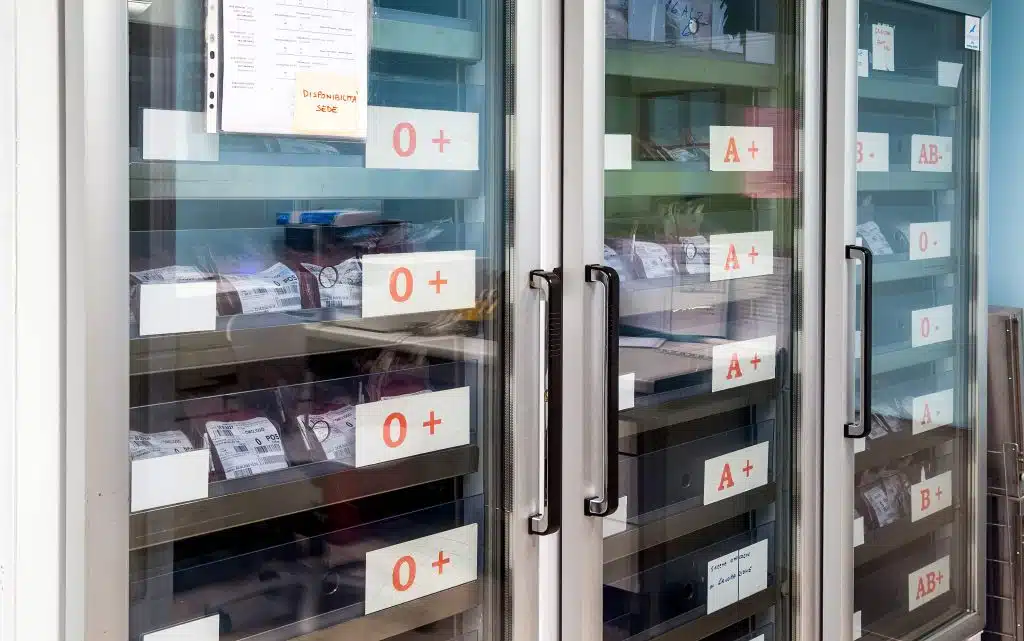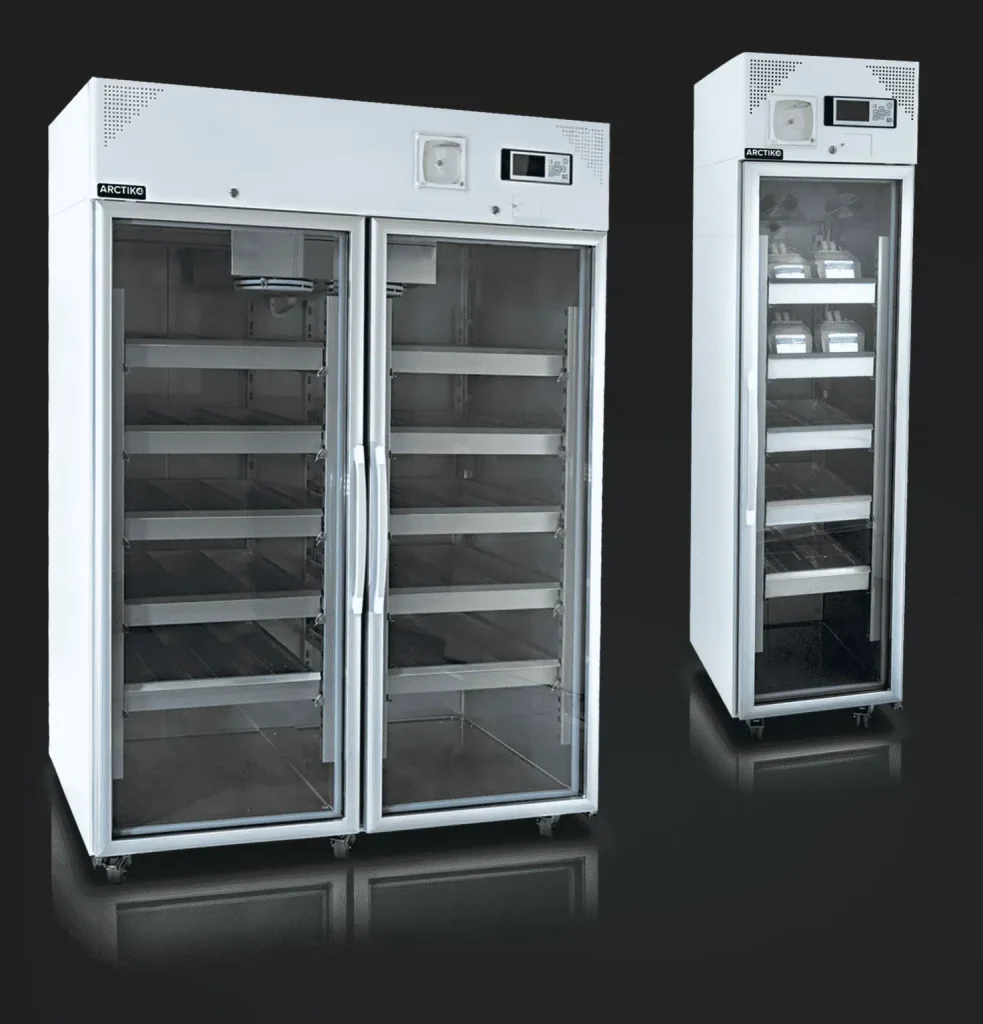Blood and plasma storage play a vital role in modern healthcare systems, ensuring the availability of these life-saving resources when needed.
The proper storage and preservation of blood and plasma are crucial to maintain their integrity and efficacy.
With advancements in technology, innovative approaches have emerged to address the challenges associated with blood and plasma storage.
This article explores the need for innovation in storage methods, focusing on temperature control, cryopreservation, automation and robotics, quality control measures, smart monitoring systems, sustainable storage methods, regulatory considerations, and future trends.
Arctiko, a leading provider of blood and plasma storage solutions, offers superior products for enhanced preservation.
Understanding the Need for Innovation in Blood and Plasma Storage
As medical science progresses, the demand for blood and plasma products continues to rise. To meet this demand effectively, it is imperative to develop innovative storage methods that ensure the safety and efficacy of these precious resources.
Traditional storage practices have limitations in maintaining optimal conditions for blood and plasma preservation. Therefore, there is a pressing need for advancements in storage techniques to overcome these challenges.
Maintaining proper temperature control is paramount in blood and plasma storage. Temperature fluctuations can have a detrimental impact on the integrity and viability of these products.
Fortunately, advances in refrigeration technology have revolutionized temperature control in storage facilities. State-of-the-art refrigeration systems now offer precise and consistent temperature management, ensuring the longevity and quality of stored blood and plasma.
The Impact of Temperature Fluctuations on Blood and Plasma Integrity
Fluctuations outside the recommended temperature range can lead to cell damage, reduced potency, and increased risk of bacterial contamination.
It is crucial to minimise temperature variations to preserve the therapeutic properties of these products and prevent wastage. Advanced cooling systems provide precise temperature control, minimising the risk of temperature-related damage.
Advanced Cooling Systems for Precise Temperature Control
Innovative cooling systems have emerged to address the need for precise temperature control in blood and plasma storage. These systems utilise advanced technologies such as dual cooling circuits, microprocessor controls, and intelligent alarms to maintain optimal storage conditions.
The integration of innovative cooling systems enhances the overall reliability and efficiency of blood and plasma storage facilities.
Cryopreservation: Preserving Blood and Plasma for Long-Term Storage

Cryopreservation is a technique widely utilised for the long-term storage of stem cells, white blood cells, and other biological resources. By subjecting these cells to ultra-low temperatures, cryopreservation enables their extended preservation while maintaining their therapeutic properties.
However, it is crucial to comprehend the advantages and disadvantages of various cryopreservation techniques to ensure optimal outcomes.
Cryopreservation Techniques: Slow Freezing vs. Vitrification

Two primary cryopreservation techniques, slow freezing and vitrification, are commonly employed in blood and plasma storage. Slow freezing involves a controlled cooling process, whereas vitrification utilises rapid freezing to prevent ice crystal formation.
Each technique has its benefits and challenges, and the choice depends on factors such as the specific blood or plasma component being preserved and the intended storage duration.
Quality Control Measures: Ensuring Safety and Efficacy of Stored Blood and Plasma
Maintaining strict quality control measures is essential to guarantee the safety and efficacy of stored blood and plasma products.
Comprehensive quality assurance protocols should be implemented throughout the storage process to minimise the risk of contamination, degradation, or mishandling.
Quality Assurance Protocols for Stored Blood and Plasma Products
Quality assurance protocols encompass various aspects of blood and plasma storage, including temperature monitoring, documentation, labeling, and adherence to regulatory standards.
Regular audits and inspections ensure compliance with safety guidelines and best practices. Implementing robust quality control measures provides confidence in the reliability and integrity of stored blood and plasma products.
Smart Monitoring Systems: Real-Time Tracking and Alert Systems for Storage Facilities
Smart monitoring systems have emerged as invaluable tools for real-time tracking and alert systems in blood and plasma storage facilities.
These systems utilise IoT (Internet of Things) technology to monitor temperature, humidity, and other critical parameters. Real-time alerts and notifications enable immediate action to be taken in case of any deviations from the desired storage conditions.

IoT Applications in Blood and Plasma Storage Monitoring
Internet of Things (IoT) applications have transformed blood and plasma storage monitoring. Wireless sensors and data analytics enable continuous monitoring of storage conditions, ensuring proactive management and early detection of potential issues. IoT-based solutions enhance the overall efficiency, safety, and traceability of blood and plasma storage facilities.
Sustainable Storage Methods: Eco-friendly Approaches to Reduce Waste
In recent years, there has been a growing emphasis on adopting sustainable storage methods in healthcare. Eco-friendly approaches not only reduce waste but also contribute to cost savings and environmental conservation. Implementing sustainable storage methods in blood and plasma storage facilities is a step towards creating a greener healthcare system.
Energy-Efficient Storage Solutions: Sustainable Cooling Technologies
Energy-efficient cooling technologies offer a sustainable approach to blood and plasma storage. By optimising cooling systems, facilities can reduce energy consumption, lower operational costs, and minimise their carbon footprint. Innovative solutions, such as energy recovery systems and eco-friendly refrigerants, enable efficient cooling while prioritising environmental sustainability.
ARCTIKO – Blood and Plasma Storage Solutions for Enhanced Preservation

ARCTIKO, a trusted leader in the field of blood storage, presents an array of refrigeration options catering to diverse needs. With a steadfast dedication to quality, dependability, and ground-breaking advancements, ARCTIKO delivers a comprehensive selection of storage equipment specially crafted to meet the distinctive demands of blood banks, hospitals, and research institutions.
Leveraging their state-of-the-art technology and unrivalled expertise, ARCTIKO not only provides superior solutions for preserving blood but also offers a specialised plasma freezer, ensuring the secure and efficient storage of plasma products.
Regulatory Considerations: Compliance and Safety Guidelines for Blood and Plasma Storage
Blood and plasma storage facilities must adhere to strict regulatory guidelines to ensure compliance and maintain the highest standards of safety.
Regulatory considerations cover various aspects, including storage conditions, documentation, labeling, and record-keeping. Adhering to these guidelines is essential to guarantee the integrity and traceability of stored blood and plasma products.
Future Directions: Promising Technologies and Trends in Blood and Plasma Storage
The future of blood and plasma storage holds promising advancements driven by emerging technologies and evolving healthcare needs. Continuous research and innovation aim to enhance storage methods, improve preservation techniques, and optimise operational efficiency. Keeping up with the latest trends is essential for storage facilities to provide the highest level of care and support to patients.
Emerging Technologies: Next-Generation Blood and Plasma Storage Methods
Emerging technologies, such as biopreservation and nanotechnology, are paving the way for next-generation blood and plasma storage methods.
These technologies offer improved preservation, longer storage durations, and enhanced recovery rates. Ongoing research and development in this field hold tremendous potential for revolutionising blood and plasma storage practices.
Trust ARCTIKO for Reliable and Innovative Blood and Plasma Storage Solutions
When it comes to reliable and innovative blood and plasma storage solutions, ARCTIKO stands as a trusted partner. With their extensive expertise, cutting-edge technology, and commitment to excellence, ARCTIKO delivers storage equipment that meets the highest standards of quality and reliability.
Trust ARCTIKO for superior blood and plasma storage solutions that prioritise the preservation and availability of these life-saving resources.

 Fast Delivery
Fast Delivery  Global Compliance
Global Compliance  Long Term Support
Long Term Support